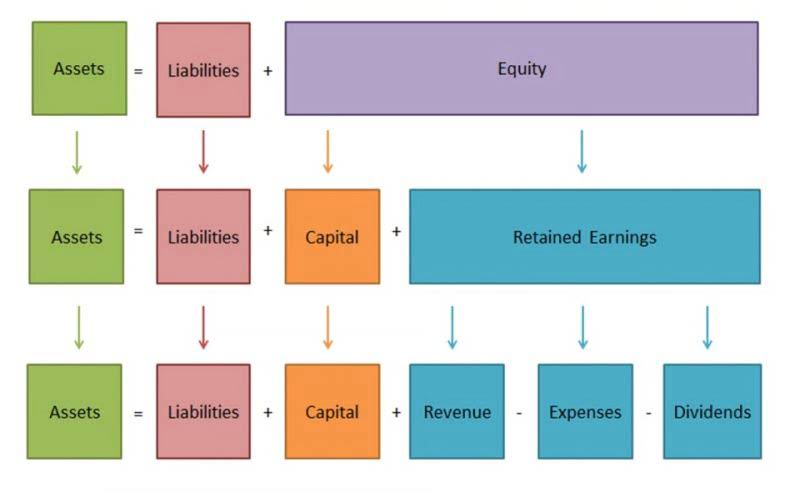
This shifting to the retained earnings account is conducted automatically if an accounting software package is being used to record accounting transactions. The company may look like a very profitable business, but that isn’t really true because three years-worth of revenues were combined. In order to properly compute for the year’s total profits, as well as the total expenses, the temporary accounts must be closed, and a new balance created at the beginning of a new accounting period. Because you don’t close permanent accounts at the end of a period, permanent account balances transfer over to the following period or year. For example, your year-end inventory which of the following is a temporary account? balance carries over into the new year and becomes your beginning inventory balance.

Stay up to date on the latest accounting tips and training
- The process of shifting balances out of a temporary account is called closing an account.
- Businesses typically list their accounts using a chart of accounts, or COA.
- To help you further understand each type of account, review the recap of temporary and permanent accounts below.
- At the end of a fiscal year, the balances in temporary accounts are shifted to the retained earnings account, sometimes by way of the income summary account.
- This shifting to the retained earnings account is conducted automatically if an accounting software package is being used to record accounting transactions.
Businesses typically list their accounts using a chart of accounts, or COA. Your COA allows you to easily organize your different accounts and track down financial or transaction information. For the past 52 years, Harold Averkamp (CPA, MBA) hasworked as an accounting supervisor, manager, consultant, university instructor, and innovator in teaching accounting online. He is the sole author of all the materials on AccountingCoach.com. For the past 52 years, Harold Averkamp (CPA, MBA) has worked as an accounting supervisor, manager, consultant, university instructor, and innovator in teaching accounting online.

OpenStax

Either way, you must make sure your temporary accounts track funds over the same period of time. For example, at the end of the accounting year, a total expense amount of $5,000 was recorded. The amount is transferred to the income summary by crediting the expense account, consequently zeroing the balance, and an equal amount is recorded as a debit to the income summary account. Expenses are an important part of any business because they keep the company going. The expense accounts are temporary accounts that show everything that the company spent on its operations, including advertising and supplies, among other expenses. A few examples of sub-accounts include petty cash, cost of goods sold, accounts payable, and owner’s equity.
Is depreciation expense a temporary account?
Your year-end balance would then be $55,000 and will carry into 2023 as your beginning balance. This permanent account process will Online Bookkeeping continue year after year until you don’t need the permanent accounts anymore (e.g., when you close your business). Unlike temporary accounts, you do not need to worry about closing out permanent accounts at the end of the period.
- The objective is to show the profits that were generated and the accounting activity of individual periods.
- Your year-end balance would then be $55,000 and will carry into 2023 as your beginning balance.
- The company may look like a very profitable business, but that isn’t really true because three years-worth of revenues were combined.
- Basically, permanent accounts will maintain a cumulative balance that will carry over each period.
- Temporary – revenues, expenses, dividends (or withdrawals) account.
Temporary accounts
- When you close a temporary account at the end of a period, you start with a zero balance in the next period.
- To avoid the above scenario, you must reset your temporary account balances at the beginning of the year to zero and transfer any remaining balances to a permanent account.
- Taking the example above, total revenues of $20,000 minus total expenses of $5,000 gives a net income of $15,000 as reflected in the income summary.
- A temporary account is a general ledger account that begins each accounting year with a zero balance.
- Then, in the income summary account, a corresponding credit of $20,000 is recorded in order to maintain a balance of the entries.
- Each time you make a purchase or sale, you need to record the transaction using the correct account.
- A few other accounts such as the owner’s drawing account and the income summary account are also temporary accounts.
You must https://emmanuelaa.org/types-of-cash-flow-measures-ebitda-cfo-fcff-fcfe/ close temporary accounts to prevent mixing up balances between accounting periods. When you close a temporary account at the end of a period, you start with a zero balance in the next period. And, you transfer any remaining funds to the appropriate permanent account. Temporary – revenues, expenses, dividends (or withdrawals) account.
Temporary accounts are used to compile transactions that impact the profit or loss of a business during a year. The balances in these accounts should increase over the course of a fiscal year; they rarely decrease. The balances in temporary accounts are used to create the income statement. A temporary account is a general ledger account that begins each accounting year with a zero balance. Then at the end of the year its account balance is removed by transferring the amount to another account. A temporary account, as mentioned above, is an account that needs to be closed at the end of an accounting period.
